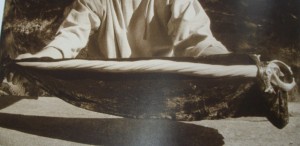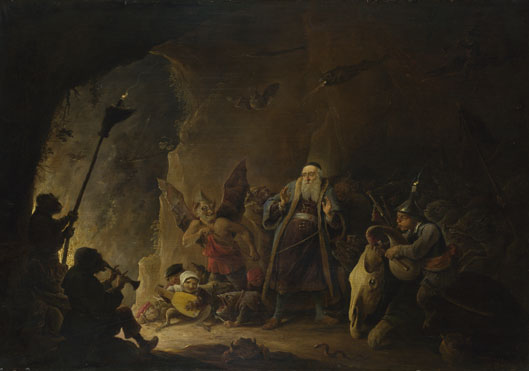 “In silver bound, beneath the ground, I am the Spiral Horn” are the final words of The Prophecy of the True Horn. The full poem, found in The Unicornis Manuscripts by Michael Green, describes the resting place of an extraordinary treasure. Since 1983, a silver bound spiral horn has remained hidden. It waits for a worthy discoverer.
“In silver bound, beneath the ground, I am the Spiral Horn” are the final words of The Prophecy of the True Horn. The full poem, found in The Unicornis Manuscripts by Michael Green, describes the resting place of an extraordinary treasure. Since 1983, a silver bound spiral horn has remained hidden. It waits for a worthy discoverer.
The clues needed to find this valuable prize can be found within the pages of the book. In a recent interview with Green, he mentioned, “people are close”, but as of yet, no one (to his knowledge) has fully solved the hunt which would lead them to the unearthing of the horn. As included in the 2008 version of the book, even if the site is located, the horn is said to now lie buried under water and may not be retrievable. Still, the joy of the hunt can be said to be in the journey of discovery, as much as the final prize, and so the mystery of the horn (whether able to be recovered or not) continues to attract seekers.
It has been noted that some of the beautifully illustrated images of Green’s book capture the style of Leonardo da Vinci. It would seem they may also express thoughts of another famous artist, David Teniers the Younger, as well.
![teniers-rich-man-being-led-hell-NG863-fm[1]](https://mysteriouswritings.com/wp-content/uploads/2013/01/teniers-rich-man-being-led-hell-NG863-fm1-300x210.jpg) Teniers (1610-1690) was born in Antwerp and followed in his father’s footsteps as an artist. His work is admired by many. In The Unicornis Manuscripts (Amber Lotus Publishing, 2008), page 70, there are portrayals of beasts inside an entrance of a cave which share characteristics to those of Teniers. In Teniers, The Rich Man being led to Hell (shown on the right), Teniers depicts the entrance to Hell as being the mouth of a cave with hideous beasts and demons surrounding the doorway. This arrangement is also noticed in Teniers’ (Dulle Greit) Mad Meg painting. Beasts with beaks, skulls as heads, reptilian tails, bony legs, and horns, can be seen amongst the darkness.
Teniers (1610-1690) was born in Antwerp and followed in his father’s footsteps as an artist. His work is admired by many. In The Unicornis Manuscripts (Amber Lotus Publishing, 2008), page 70, there are portrayals of beasts inside an entrance of a cave which share characteristics to those of Teniers. In Teniers, The Rich Man being led to Hell (shown on the right), Teniers depicts the entrance to Hell as being the mouth of a cave with hideous beasts and demons surrounding the doorway. This arrangement is also noticed in Teniers’ (Dulle Greit) Mad Meg painting. Beasts with beaks, skulls as heads, reptilian tails, bony legs, and horns, can be seen amongst the darkness.
These beastly features, at the cave entrance, are seen in Green’s book and the likeness to Teniers is noticeable. The side reading to Green’s image describes these creatures, presumably ones of Hell, as those who ‘know the darkness.’ But, in the doorway of Green’s illustration, he draws and reveals the Unicorn with light flowing into the cave.
Hell is thought of in various ways by different people. It would seem to me, as the end poem suggests, “Into darkness will I fade, into a night that Man has made”, a Hell or inner darkness could be created by each of us. And it would seem, as a possible suggestion for Green’s image, the Unicorn waits to guide one out of it.
Another similarity between Green’s work and Teniers is noticed in Teniers’ The Temptation of St. Anthony (1644-46). Teniers illustrates a tail slithering out beneath the lady’s garment (shown below). This same detail is detected in Green’s image. Does this represent the beastly, lower nature of man cannot be hidden beneath any garment a person chooses to wear?


![temptatj[1]](https://mysteriouswritings.com/wp-content/uploads/2013/01/temptatj1-171x300.jpg)

Pingback: A Journey - Page 870
“It seems to me that the greater could be grasped if the lower natures or burdens are left in the darkness and one decides to walk in the light.”
Excellent point, Jkyle. Sometimes, the Metaphor of “The Light” can represent a huge “stumbling block.” For example, does the Moth fly into the fire because it is blind? Certainly, the Moth must see the Light of the Fire in some type of “Partial” way. Otherwise, it would not recognize the light, which it has mistaken for fire.
The Analogy of “The Cave” is a little easier to understand. The Cave is a place of Solitude (or quititude), where there is this potentual for peace (or rest) from the outside world. But because there is Darkness inside of it too, it can also represent a place of Fear.
Also, regarding “the tail that is slithering out from the dress,” a Garment can represent a Glove. But it can also represent a reference to a “specific” limb (or finger) used as a form of covering, too.
In fact, in the very SAME picture (Woman with the tail), notice that the bird creature that is holding a Rod is also holding up it’s Index Finger (also representing a Rod in the Bharata). The Index finger is associated with the Element AIR (The bird/messenger).
It’s kind of like what Duncan Burden said: “The Masters point to the way, and our eyes behold the truth.” However, a KEY can unlock the doors to either Heaven or to Hell.
If it is really true that “The Masters” didn’t really want for all of us to be a part of their world, then perhaps it should make sense that they considered the LOCK to be of greater value.
Just to clarify, the Seal that I am referring to (in the Bharata) that represnts the Lock goes
By the name of TRIPATAKA (pronounced Tree-pah-tah-ka). The Descriptions for what this Seal can be used to represent are a Crown, A Tree, a Lamp, a Thunderbolt, and a Pidgeon (Dove?).
Whether this Seal represents a Lock or a key, I am not sure. But the Element ruled by the Ring Finger is EARTH. This link will take you directly to the above mentioned Seal:
http://onlinebharatanatyam.com/2007/09/03/tripataka-hand-gesture-mudra/
Here’s another link that gives additional information about the Seal for those who are interested:
http://www.generalism.net/lakshmi/Dance/mudras.html